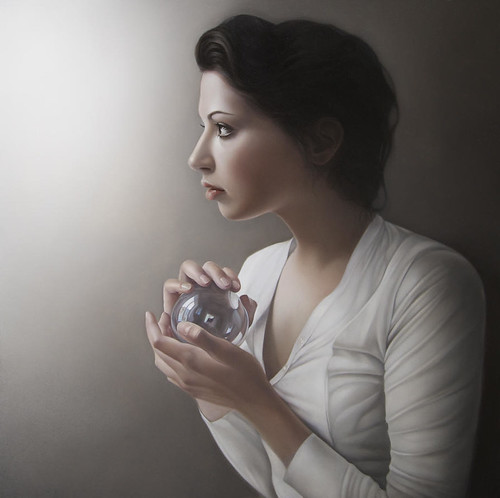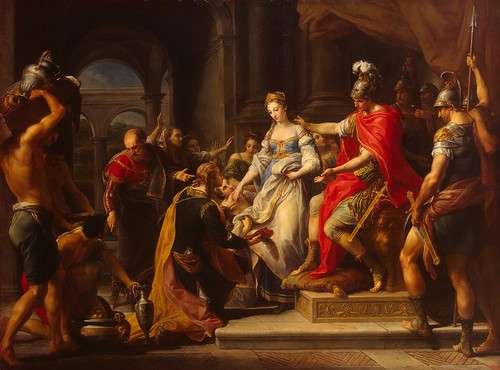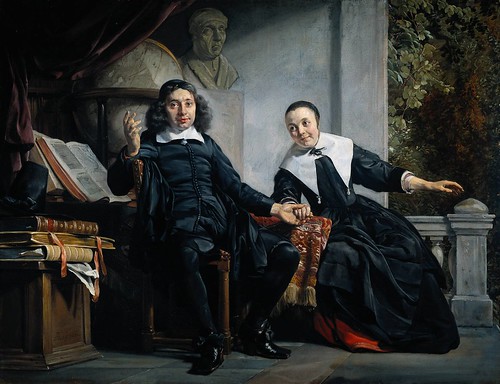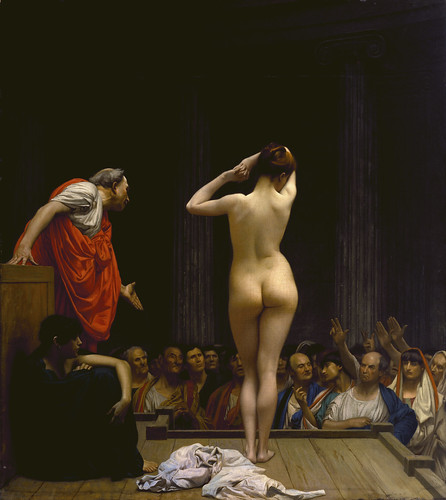Saturday, July 31, 2010
Juan Gris - Guitar with Clarinet [1920]
Friday, July 30, 2010
Pascal Adolf Jean Dagnan-Bouveret - Watercolourist in the Louvre [1889]

[Oil on panel, 35.5 x 30.5 cm]
Thursday, July 29, 2010
Ferdinand Heilbuth - Rowing on the Seine [1860-80]

[Oil on panel, 35 x 56 cm]
Wednesday, July 28, 2010
Duffy Sheridan - Alexis

[Oil on linen, 16 x 18 inches]
Tuesday, July 27, 2010
Oswald Achenbach - Fireworks in Naples [1875]

[Oil on canvas, 65.5 x 101.5 cm]
Monday, July 26, 2010
Vita Pagh - Modern Art

Sunday, July 25, 2010
Pierre Billet - Digging for Oysters [1884]

[Oil on canvas, 115 x 180 cm]
Saturday, July 24, 2010
Henri Matisse - Ballerina [c.1927]
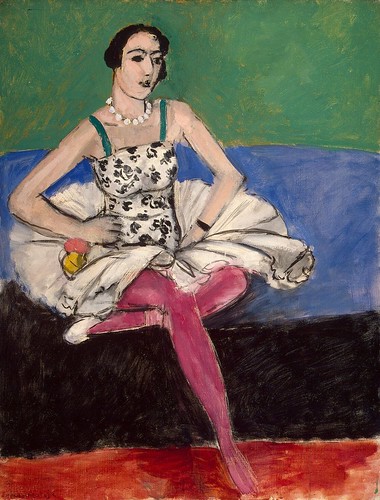
Henri Matisse - Portrait of the Artist’s Wife [1913]
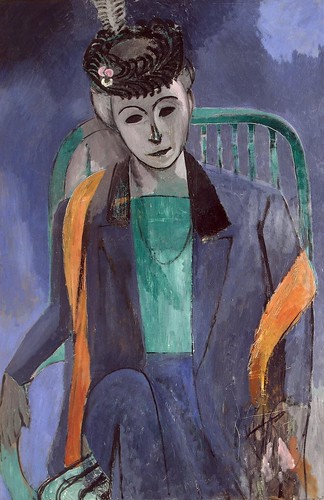
[Oil on canvas, 146 x 97.7 cm]
Friday, July 23, 2010
Henri Matisse - Girl with Tulips [1910]

The interaction between the flowers and the human figure forms the central theme of the work. The strong stems of the tulips forcing themselves upwards in an expression of rebirth and the coming spring, the thick green colour of the sharp leaves, everything carries within it the energy of growth. Nature and man seem to cancel each other's specific
[Oil on canvas, 92 x 73.5 cm]
Thursday, July 22, 2010
Henri Matisse - Music [1910]

Henri Matisse - Dance [1910]
How rightly has Matisse captured the profound meaning of the dance, expressing man's subconscious sense of involvement in the rhythms of nature and the cosmos. The five figures have firm outlines, while the deformation of those figures is an expression of their passionate arousal and the power of the all-consuming rhythm. The swift, joint movement fills the bodies with untamed life force and the red becomes a symbol of inner heat. The figures dance in the deep blue of the Cosmos and the green hill is charged with the energy of the dancers, sinking beneath their feet and then springing back.
For all its expressiveness, Matisse's Dance has no superfluous emotion, other than that required by the subject. The very organisation of the canvas ensures that. Instinct and consciousness are united into a harmonious whole, as we can feel in the balance between centrifugal and centripetal forces, and in the outlines of the figure on the left, strong and classical in proportion.
[Oil on canvas, 260 x 391 cm]
Wednesday, July 21, 2010
Henri Matisse - Still Life with The Dance [1909]

[Oil on canvas, 89.5 x 117.5 cm]
Henri Matisse - Conversation [1908-12]

[Oil on canvas, 177 x 217 cm]
Tuesday, July 20, 2010
Henri Matisse - The Red Room [1908]

[Oil on canvas, 180 x 221 cm]
Henri Matisse - Dishes and Fruit [1901]

Monday, July 19, 2010
Henri Matisse - Vase of Sunflowers [c.1898-99]

[Oil on canvas, 46 x 38 cm]
Henri Matisse - Fruit and Coffeepot [c.1898]
Light still draws the artist's attention; the softly modelled fruits, dish and cup exist within an almost tangible light environment. But they do not dissolve into that light; rather, the energetic moulding of the coffeepot with broad brushstrokes increases the sense of mass, while the coloured contour emphasises each object. Colour has here acquired greater independence than was seen in earlier works. The intensity of the reflected colours on the surface of the coffeepot, the thick broad areas of coloured shadow on the tablecloth, all state the artist's increasing interest in this element. Matisse's world was becoming less dependent on concrete reality, and he created a greater distance from that reality by using a high viewpoint which enabled him to see the objects from a strange and unnatural angle.
[Oil on canvas, 38.5 x 46.5 cm]
Sunday, July 18, 2010
Henri Matisse - Blue Pot and Lemon [1897]
The light softly flowing from the window fills the painting with coloured reflections and the concrete world of objects seems to be in the power of the vibrant light environment. The lemon and the blue pot, by the very nature of their colours and as important elements in the painting, which "support" the composition, could easily have become resonant colour accents, but in Impressionist manner Matisse carefully subordinates colour to light, thus dulling their intensity.
Yet in this small work there is none of the Impressionist fragmentation of surface. Light achieves its colour transformations within the precisely organised space of the painting: the sharp diagonal of the window-ledge and the clear verticals and horizontals of the walls and window make the composition dynamic and yet stable at the same time.
[Oil on canvas, 39 x 46.5 cm]
Saturday, July 17, 2010
Andrew Wyeth - Helga

Friday, July 16, 2010
Vincent van Gogh - Morning, Going out to Work (after Millet) [1890]

Thursday, July 15, 2010
Lois Mailou Jones - Jeune Fille Francaise [1951]

[Oil on canvas, 72.4 x 59.7 cm]
Wednesday, July 14, 2010
Jean-Auguste-Dominique Ingres - Odalisque with Slave [1842]

[Oil on canvas, 76 x 105 cm]
Tuesday, July 13, 2010
Mary Jane Ansell - Protection
[Oil on panel, 15 x 15 inches]
Monday, July 12, 2010
Pompeo Batoni - Thetis Takes Achilles from the Centaur Chiron [1770]

Sunday, July 11, 2010
Pompeo Batoni - Continence of Scipio [c.1771-72]
Jan de Bray - The Haarlem Printer Abraham Casteleyn and his wife Margarieta van Banck [1663]
Saturday, July 10, 2010
Walter Rane - Sewing the Spine

[Oil on board, 23 x 21 inches]
Friday, July 9, 2010
Jean-Leon Gérôme - A Roman Slave Market [c.1884]
Thursday, July 8, 2010
Chris Sedgwick - Gatekeepers of the Cycle
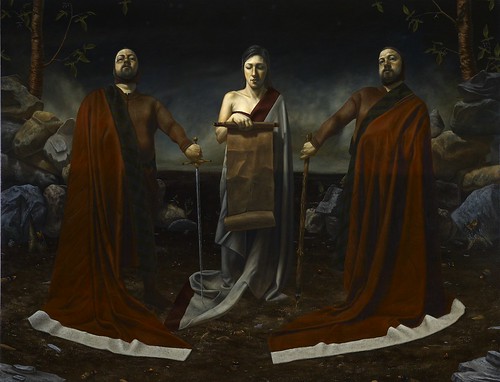
[Oil on canvas, 64 x 48 inches]
Wednesday, July 7, 2010
Alfred Stevens - The Painter and His Model [1855]
[Oil on fabric, 92.4 x 77.3 cm]
Tuesday, July 6, 2010
François Flameng - Mrs Adeline M Noble [1903]
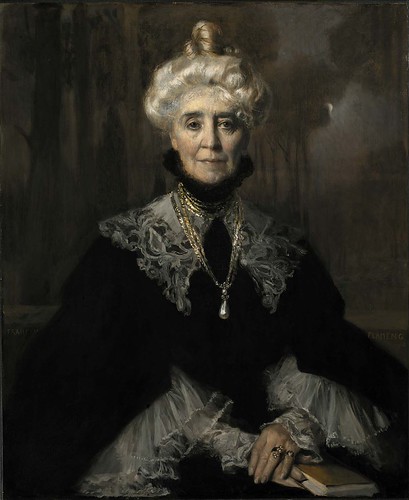
Monday, July 5, 2010
Sunday, July 4, 2010
Marco Ortolan - Venice Clown
and http://www.artbreak.com/marcoortolan/works
Saturday, July 3, 2010
Paul Joseph Constantin Gabriel - A Watercourse at Abcoude [1878]

[Oil on panel, 41 x 50 cm]
Friday, July 2, 2010
Israel Zohar - Nude at the Window
Thursday, July 1, 2010
Zoey Frank - Zack

Zoey Frank was born in Boulder, Colorado in 1987. She is currently studying classical painting under Juliette Aristides in Seattle. She works daily from the model and is captivated by both the idiosyncrasies of each individual and the archetypes they embody.
See: http://zoeyfrank.blogspot.com/
[Oil on panel, 16 x 12 inches]





